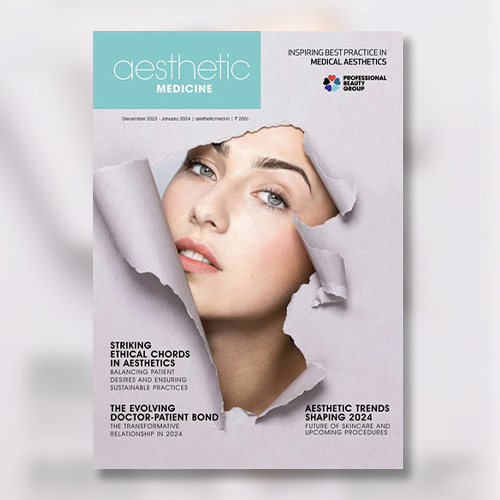On May 23, as part of the Aesthetic Medicine Digital Series, Mrs Iro Smith, Founder and Director, Iro Smith Wake up with Make-up, joined Shriyal Sethumadhavan, Executive Editor, Aesthetic Medicine India, live for an interview on permanent make-up.
Here’s listing select key takeaways from the interview:
Permanent Makeup is the implantation of colour into the dermis layer of the skin. The further you go in the dermis, the longer the colours stay.
Devices: In 1980, Chinese women used bamboo sticks to do the procedures. From 1990, there have been great advancements, and the needles are of one time use disposable.
Indian market: At first, there was not much exposure, people were not aware of this arena. Now there is a demand, which is increasing by the years. India is a fresh market for permanent makeup.
Treatments for which permanent makeup can be used: Beauty treatments like eyebrows, eyeliner, lip liners, full lips, scalp pigmentation and skin conditions like vitiligo or loss of colour near the areola.
The procedure: Signing of the consent form, explaining the procedure, once the patient approves the process starts. First off, the esthetician cleans the area, which is going to be treated and draws out how the output would look like. Once the patient and doctor have a mutual decision, the procedure begins. Estheticians have a mandate to follow which is wearing gloves, mask, uniform and changing the equipment after every client.
Preparation for the procedure: It is a must for every esthetician to know about the client’s medical history.
Post-treatment: Patients are advised to not use soap or water on the treated area for a week as it may hinder with the colour. Also, avoid sun exposure and swimming in the pool (chlorine).
Duration of the effect: Depends on various factors like age, skin-type and many more. Usually in the first two weeks, the colour is darker and in a month and a half, the required colour is seen.
Touch-ups: Recommended to do one touch-up in the first six months or in a year.
Side-effects: Usually swelling occurs, it is an effect, not a side-effect. The design and discolouration are the two side-effects faced by many.










Leave a Reply